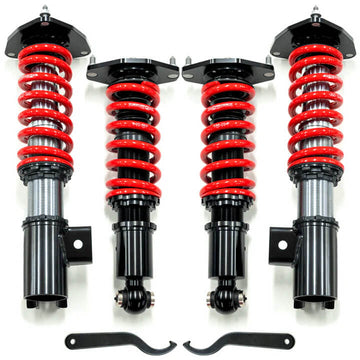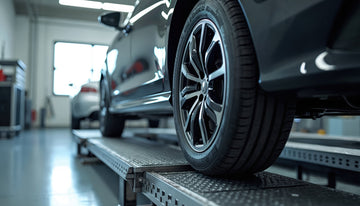A shock absorber, also known as a damper, is a critical component of a vehicle's suspension system. It plays a key role in controlling the movement of the suspension and managing the impact of road irregularities. Shock absorbers also play an important role in maintaining tire contact with the road surface during braking, accelerating, and cornering. It is commonly used in vehicles, such as cars, trucks, motorcycles, and bicycles, to improve ride comfort and handling. Without proper damping control from shock absorbers, tires may lose traction and skid out of control which results in poor performance and a dangerous driving experience..
What does a shock absorber do?
The primary function of a shock absorber is to dampen the oscillations and vibrations caused by bumps, potholes, and other imperfections on the road surface that create sudden impulses and dampen the movements of the suspension caused by the spring. When the wheels encounter these irregularities, they move up and down, causing the suspension springs to compress and expand. Without a shock absorber, the suspension would continue to bounce uncontrollably, leading to a rough and uncomfortable ride.
Shock absorbers work by converting the kinetic energy of the suspension movement into heat energy, which is dissipated through hydraulic fluid or gas contained within the shock absorber. As the suspension compresses and extends, the shock absorber's piston moves through the fluid, generating resistance and controlling the movement of the suspension.
By controlling the speed at which the suspension moves, shock absorbers help maintain tire contact with the road surface, improving traction, stability, and handling. They also contribute to vehicle control during braking, acceleration, and cornering, minimizing body roll and maintaining optimal tire grip.
What types of shock absorbers are available?
Various types of shock absorbers are made from multiple mechanical components to suit different vehicle types and applications. Here are some commonly found types of shock absorbers:
Gas charged shock absorbers
These shock absorbers are filled with pressurized gas, usually nitrogen, which helps prevent aeration and cavitation within the hydraulic fluid. Gas charged shock absorbers provide improved damping performance, better heat dissipation, and reduced fade during prolonged use.
Twin-tube shock absorbers
Twin-tube shock absorbers consist of an inner tube known as the working tube and an outer tube known as the reserve tube. These shock absorbers have a divided internal space, with the hydraulic fluid and piston located in the working tube. Twin-tube designs are commonly used in various vehicles, offering a balance between comfort and performance.
Mono-tube shock absorbers
Mono-tube shock absorbers have a single tube construction, with the hydraulic fluid and piston contained within this tube. This design allows for larger piston sizes and improved heat dissipation compared to twin-tube designs. Mono-tube shock absorbers are often preferred for their enhanced performance and handling characteristics, making them popular in high-performance vehicles and off-road applications.
Adjustable shock absorbers
Adjustable shock absorbers allow for adjusting the damping force according to specific driving conditions and preferences. They often have adjustable settings that allow the user to fine-tune the shock absorber's damping performance, providing options for comfort-oriented or sportier driving experiences.
Electronic/Active damping shock absorbers
Electronic or active damping shock absorbers utilise electronic sensors and control systems to continuously adjust the damping force based on real-time driving conditions. These advanced shock absorbers offer improved adaptability and responsiveness, providing optimal performance and comfort in various driving situations.
Why are regular inspection and maintenance important for shock absorbers?
Over time, shock absorbers may experience wear and degradation due to sudden impulses, resulting in diminished performance. Regular inspection and maintenance are important to ensure the effectiveness of the shock absorbers. Signs of worn shock absorbers include excessive bouncing, increased braking distances, poor handling, and uneven tire wear.





